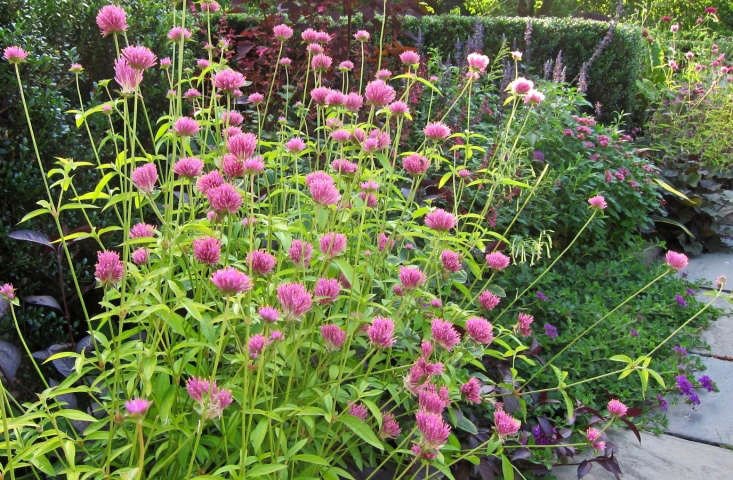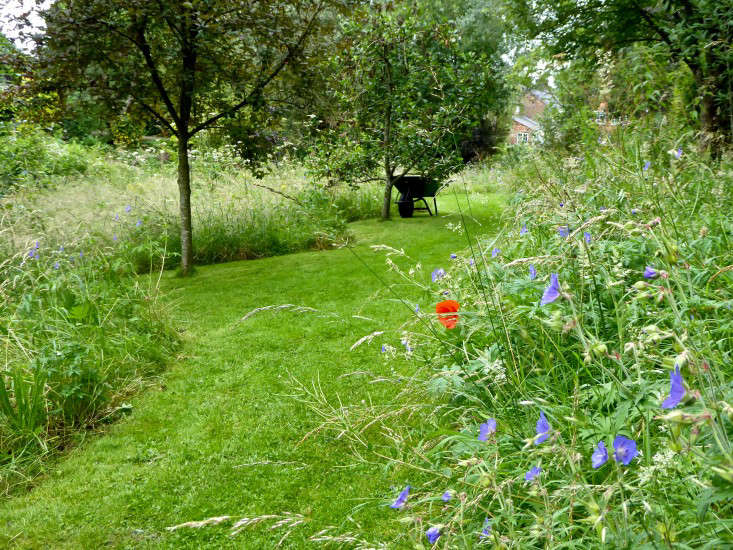Globe Amaranth, Gomphrena: Bachelor Button
Gomphrena is a cheery little clover look-alike that for centuries has graced classic cutting gardens. American gardeners have relied on its pleasing bachelor button flowers since the early 1700s. With pink, purple, or white gumball flowers, globe amaranth has a reliable marathon bloom time (from early summer until the first hard frost).
Somewhat short in stature (topping out at one to two feet), it is frequently seen in the front of the border where it obligingly fills in any bare spots left by ephemerals or spent spring bulbs. Gomphrena makes a durable cut flower and, when dried, can literally last for years.
Read on for everything you need to know about how to grow and care for Gomphrena.

Recently, plain little dependable globe amaranth has undergone a Cinderella-like transformation. Instead of a fairy godmother, research horticulturists are the ones responsible for Gomphrena’s new look.
Starting in the late 1990s, breeders began to produce dramatic new cultivars, particularly those crossed with its relative, Rio Grande globe amaranth.

Long-stemmed Gomphrena haageana is taller and lankier than G. globosa and is a native of Texas, New Mexico, and northeastern Mexico, which may account for its ability to stand up to high wind and blistering heat. Distinctive new selections such as the bright fuchsia ‘Fireworks’, stoplight red ‘Strawberry Fields’, and ‘Lavender Lady’ are becoming widely used.

Whether you stick with the classic Gomphrena globosa or choose one of the newer, flashier varieties, you will be getting a plant that is virtually maintenance free and almost completely impervious to disease and pests.

The colorful globe amaranth “flowers” are actually bundles of stiff, papery bracts or modified leaves that support the real flowers, which are white or yellow trumpets so small that they are barely visible to the naked eye. The bright gold stamens of the flowers on ‘Fireworks’ appear like tiny explosions on the fuchsia bracts.
Cheat Sheet
- Pinch back blooms on young plants to encourage a bushier habit and increased flowering
- Shorter varieties of Gomphrena work well in containers while taller, airier cultivars look great in borders planted among other sun lovers such as zinnias, salvias, Mexican sunflowers (Tithonia diversifolia), and dahlias.
- This plant is not attractive to deer but will reliably draw butterflies into your garden.
- For the best dried flowers, cut Gomphrena as soon as the blooms are completely open. Strip the leaves, tie the bare stems in bunches and hang them upside down in a dark, dry, well-ventilated place.
Keep It Alive
- Grow Gomphrena in full sun as an annual in all zones except 9 to 10 where some varieties may be perennial.
- This plant will grow well in dry conditions but it is wise to water when plants are young and in drought conditions after they are established. Always water at ground level to avoid wetting the leaves and inviting leaf spot.
- Globe amaranth will grow in poor soil but requires good drainage.

Gomphrena is usually available in garden centers in the spring but can be frequently ignored because its flower display doesn’t gear up until later in the season. If you want to grow your own plants, soak the seeds first for a day or two to speed up germination. Sow indoors in spring from six to eight weeks before the date of the expected last frost, or plant directly in the garden after the soil has warmed. Experts advise planting a large number of seeds as the germination rate of Gomphrena tends to be low. Sometimes this plant can become a permanent garden resident by obligingly re-seeding itself.
For more growing tips, see Globe Amaranth: A Field Guide to Planting, Care & Design in our curated garden design guides to Annuals 101. Read more:
- Chic Techniques: 10 Ideas to Steal from a Parisian Florist
- Dried Flowers: 7 Ideas for Grasses, Seedpods, and Branches
- Small Space DIY: A Wall of Colorful Dried Flowers








Have a Question or Comment About This Post?
Join the conversation